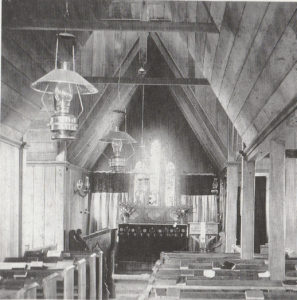As Howick and districts count down to the 175th anniversary, the Times continues its series by Alan La Roche giving readers a glimpse of life as it used to be. The countdown began at the 170th in 2017
In 1855 six-year-old Charles Lush of Howick was taken by his father to see the New Zealander Newspaper offices in Auckland, lit with artificial gaslight. It took another 72 years before electricity arrived in Howick in 1927.
It used to be said amongst early settlers that good people go to bed when it gets dark and get up with the first light. Some residents enjoyed gardening with the early birds’ morning chorus. A few thought electric lights would stop cows letting down their milk.
We should remember that in the 1918 Flu Epidemic, patients were in wards lit by candles and kerosene lamps in the Howick and Pakuranga town halls. Before power arrived, many organisations had meetings when there was a full moon so that they could walk more safely on the metal roads.
In the 1920s Howick shops had a late-night every Saturday closing at 9 pm which meant workers walked home in the dark unlit roads. For several years silent movies were shown in the Howick Town Hall with a generator on the back of a Ford Model T truck outside which powered the flickering films, while a pianist provided emotive music and the projectionist told jokes or stories to keep the audience amused if the film broke.
By 1926 the Auckland Power Board allocated funds to reticulate Howick’s 522 residents. Bucklands Beach had a population of 90 but only 7 were permanent residents, the rest were holiday baches.

Electricity for Auckland at that time came from Horahora Waikato Dam built to supply electricity to the Waihi Goldmines at Waikino. The average power account in 1928 was 6 shillings a week which is equivalent to $60 today which was expensive for many.
Most houses had very few electric lights initially. Later a few had electric irons, replacing old charcoal or Mother Potts irons that sometimes left black marks on recently laundered clothes. One lady who used an iron for the first time in the big wooden Marine Hotel did not know to turn it off and the hotel was burnt down.
All new buildings had to be brick. Some continued to use reliable coal ranges or kerosene lamps. The bakers in Howick used rata and taraire firewood for many years from the Mangemangeroa Valley and quickly adapted to the clean, easier-to-use electric ovens.
The arrival of electricity in Howick in 1927 was thought to speed the growth of Howick. There was a rush to subdivide Marine Parade, Cockle Bay and Bucklands Beach.
A quarter acre in Marine Parade was available for only £75 pounds in 1923.
Frequent interruptions to the supply especially at dinnertime were frustrating for housewives.
The brass lamps in All Saints Church were dumped.
In 1938 Gandy Motors had hand-pumped Texaco, Shell and Plume petrol pumps but only Big Tree had an electric pump which suddenly became the most preferred petrol.
It took many years before houses became filled with electric appliances.
We think of electricity today as an essential service to our homes and businesses.
Alan La Roche, Howick Historian







